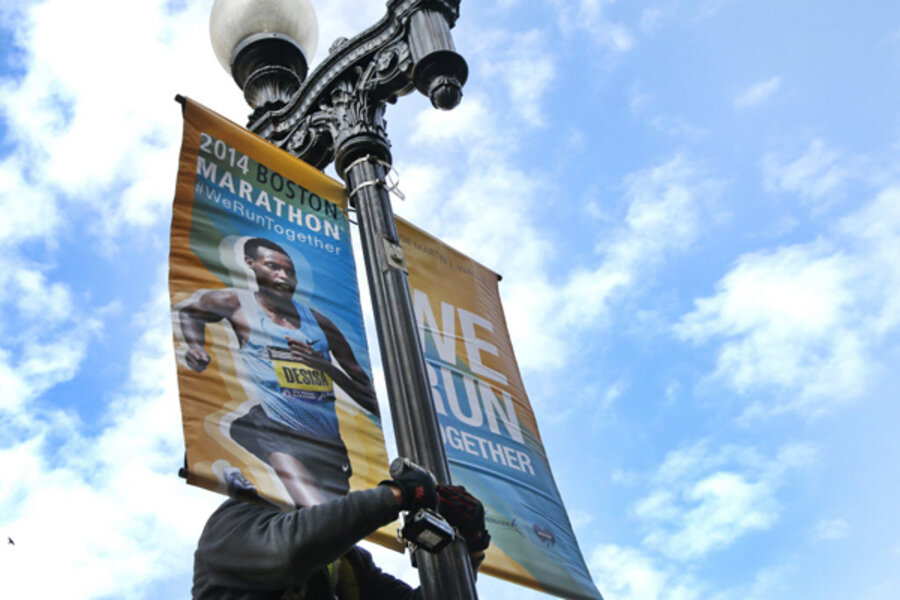Boston Marathon: the security plan for 36,000 runners and 1 million spectators
Loading...
The Boston Marathon wends its way for 26.2 miles through seven towns before reaching its namesake city. This year, with the heightened interest, the field size has been expanded to about 36,000 runners, 9,000 more than last year. And some 1 million spectators, double last year's turnout, are expected to cheer on the sidelines.
That sprawl and all those people are what make keeping the Boston Marathon safe a herculean undertaking.
"This is not like securing a football stadium for a Super Bowl, where you just put a big fence around it," says Kurt Schwartz, director of the Massachusetts Emergency Management Agency (MEMA). But this year, officials are meeting that challenge with "unprecedented resources," he says.
Four months after the bombings last year, MEMA began a massive collaboration with federal, state, and local officials to design a public safety strategy to protect this year's race.
Among the new security measures: doubling the number of law enforcement personnel to about 3,500 and using phalanxes of bomb-sniffing dogs, metal detectors, and security cameras. A SWAT team from the Federal Bureau of Investigation will be on hand.
"The biggest newness to this is the numbers," says Kieran Ramsey, an assistant special agent in charge at the FBI's Boston office, referring to the Boston Police, Massachusetts State Police, and FBI presence.
In addition to firearms and explosives, officials have banned baby strollers, among other things, from the marathon area. And spectators are discouraged from bringing items such as coolers and backpacks, which will require a search at various entry checkpoints.
The Boston Athletic Association, the race's organizer, has also asked "bandits"– unregistered runners who swoop into the race midcourse – to sit out this year. Still, Mr. Schwartz says, there are "no plans to expend resources" to stop bandits, unless they are violating other race rules, such as a ban on bulky costumes.
The new rules are similar to those installed at other big races, including the New York City Marathon, after the blasts in Boston.
But Boston has also grappled with a number of unique logistical challenges, including the marathon route's winding path though eight separate municipalities.
This year, the communication systems between those places have been improved, Schwartz says. Each of them has also been supplied with the resources it would need in the event of a disaster, after local officials in those places had expressed concern about their ability to handle an emergency on the scale of the bombings in Boston, he says.
"Our absolute hope is that we won't have to use any of these capabilities," Schwartz says.
At the same time, officials have acknowledged the impossibility of building a completely foolproof security plan and eliminating all risk.
Just after a tribute ceremony near the finish line on April 15, one year to the date of the bombings, police closed off much of the area for hours to respond to a man who was proceeding barefoot down the street wearing a backpack that allegedly contained a confetti-filled rice cooker. Kevin Edson, a college student, is being held on $100,000 bail and faces charges that include making a false bomb threat.
His family said in a statement that he has struggled with mental health issues.
“To have this happen on the one-year anniversary of such a horrific crime is unfathomable,” the statement read.





